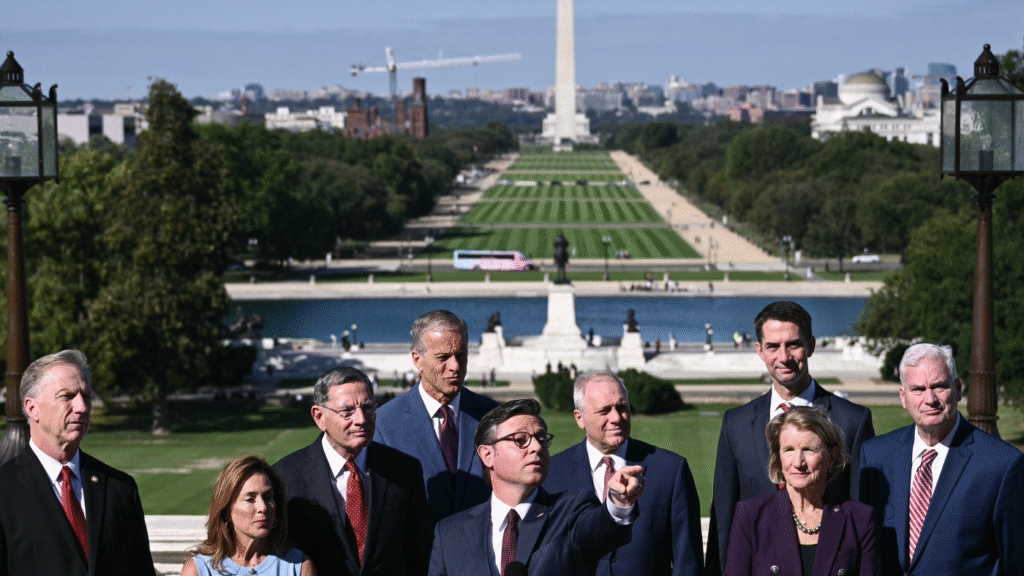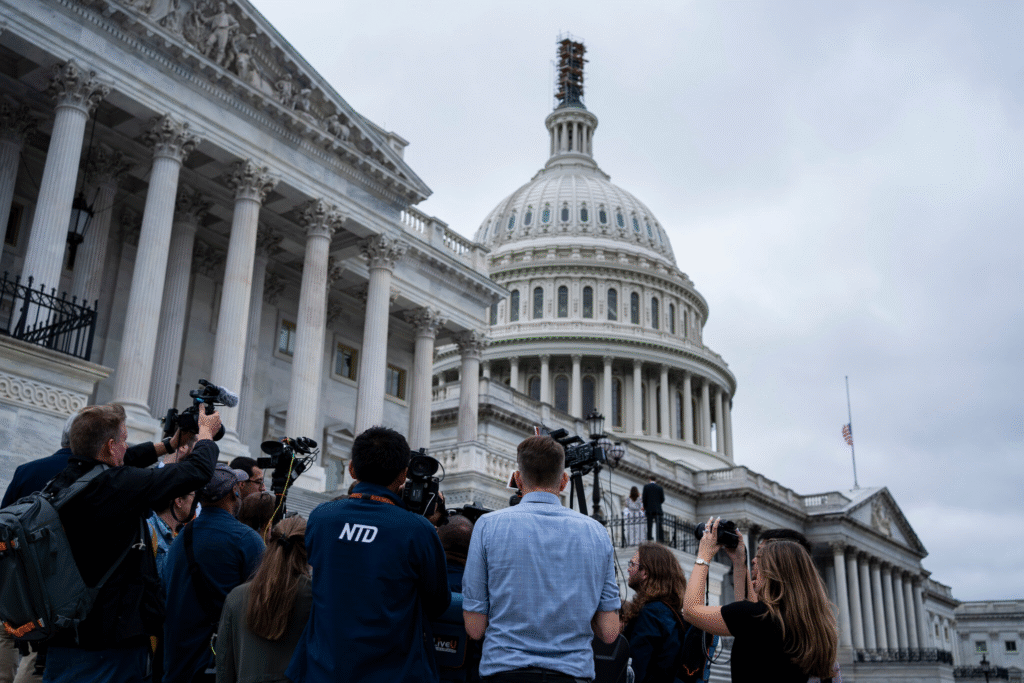US Government Shutdown 2025: Senate Fails for 3rd Time to Pass Funding Bills, Millions Face Growing Uncertainty
The US government shutdown 2025 drags on as the Senate fails for the 3rd time to pass crucial funding bills, leaving millions of Americans facing uncertainty and rising economic risks
Efforts to quickly end the US government shutdown stalled on Wednesday (October 1) after senators rejected a plan aimed at resolving the ongoing impasse between President Donald Trump and congressional Democrats.
With no agreement reached, many federal departments and agencies have been closed since midnight. Around 750,000 federal workers are expected to be placed on furlough, with pay withheld until they return to work. Essential workers, including military personnel and border agents, may be forced to work without pay, and some could miss paychecks next week.

The shutdown occurs amid Trump’s drive to slash government departments. The White House has warned that some furloughs could turn into mass firings. “A lot of good can come down from shutdowns,” Trump told reporters. “We can get rid of a lot of things that we didn’t want. They’d be Democrat things.”
Senate Democrats, demanding extended health care subsidies for low-income families, refused to support the House-passed stop-gap funding bill.
House Republicans passed a temporary funding fix to keep federal functions running through late November. However, the 100-member Senate requires 60 votes to send it to Trump’s desk. Democrats have insisted they will not cooperate without concessions on spending cuts, particularly in health care.The negotiations have been unusually acrimonious, with Trump mocking Schumer and House Minority Leader Hakeem Jeffries on social media. Senate Republican leaders had hoped to secure support from Democrats to pass the bill but fell short.
Congress is out on Thursday for the Jewish Yom Kippur holiday. The Senate is expected to resume work on Friday and may remain in session through the weekend, while the House is not due back until next week.
The United States is grappling with mounting uncertainty as the government shutdown of 2025 continues, following yet another failed attempt by the Senate to pass critical funding bills. This marks the third time in recent weeks that lawmakers have been unable to break the deadlock, leaving millions of Americans caught in the crossfire of political brinkmanship.

With federal workers unpaid, public services halted, and the economy showing signs of strain, the impasse is not only a domestic crisis but also one with international ramifications.
On Tuesday, the Senate once again failed to secure the necessary votes to move forward on a series of stopgap funding bills aimed at reopening the government. Despite marathon negotiations and mounting pressure from both sides of the aisle, deep divisions over budget priorities—particularly on defense spending, social programs, and border security—derailed progress.
According to official records, the vote fell short by a narrow margin, reflecting the entrenched partisan divide. Majority leaders expressed frustration, while opposition leaders accused their counterparts of political gamesmanship at the expense of the American people.
“We are failing the very people we swore an oath to serve,” one Senator admitted in a tense post-vote press briefing.
The ongoing shutdown has already taken a toll on the federal workforce of over 2 million employees. Hundreds of thousands remain furloughed, while others—considered essential—continue to work without pay.
Key services affected include:
Air travel and TSA operations – Long lines and staffing shortages reported at major airports.
Healthcare programs – Delays in processing Medicare and Medicaid claims.
National parks and museums – Closed to the public, costing tourism-dependent communities millions.
Scientific research – Grants and ongoing projects disrupted across universities and research institutions.
For many families, the financial uncertainty is becoming unbearable. One furloughed worker told local media: “We’re living paycheck to paycheck. With no income, we don’t know how to pay rent or buy groceries this month.”
Economists warn that the prolonged shutdown could shave billions off the U.S. economy. Estimates suggest that the shutdown could cost $1.5 billion per day, adding up to tens of billions if the deadlock continues.

Small businesses dependent on federal contracts are particularly vulnerable, while Wall Street has already seen heightened volatility. Credit rating agencies have hinted at possible downgrades if the government remains paralyzed.
“The longer this shutdown persists, the greater the risk of long-term damage to U.S. credibility and financial stability,” warned an economist at the Brookings Institution.
h parties continue to trade blame for the ongoing crisis.
Republicans argue that Democrats are unwilling to compromise on spending cuts and immigration reforms.
Democrats counter that Republicans are holding the government hostage over partisan priorities, particularly increased defense budgets and tax cuts for the wealthy.
The White House, meanwhile, has maintained a combative stance. President’s aides insist that opposition leaders must “meet halfway,” but critics argue that the administration’s shifting demands have complicated negotiations.
Political analysts warn that the deadlock could harden further as lawmakers begin to focus on the upcoming midterm elections, turning the shutdown into a campaign weapon rather than a governance issue.
Public frustration is mounting across the country. Demonstrations have erupted in Washington, New York, and other cities as federal employees demand swift action to end the stalemate. Social media campaigns with hashtags like #EndTheShutdown and #PayOurWorkers have gained traction.
Opinion polls show that over 70% of Americans disapprove of how Congress is handling the shutdown, with many blaming both parties equally. This widespread dissatisfaction could significantly influence upcoming electoral races.
The shutdown has not gone unnoticed globally. Allies have expressed concern about the instability of U.S. governance, while adversaries have pointed to the crisis as evidence of political dysfunction.
Financial markets abroad have shown nervous responses to U.S. volatility.
Diplomatic missions are running on limited staff, affecting consular services and visa processing.
Defense commitments with NATO and other partners are being questioned amid reduced operational capacity.
Short-Term Deal – Lawmakers may reach a temporary funding compromise to reopen the government while larger issues are negotiated.
Prolonged Stalemate – The shutdown could continue for weeks, deepening its economic and social impacts.
Public Pressure Forces Breakthrough – Escalating protests and plunging approval ratings may push leaders to compromise.
Executive Action – The White House may attempt to bypass Congress with emergency measures, though such moves could trigger legal battles.
Read Also : Mahatma Gandhi’s Diet: 5 Timeless Lessons for Gut Health, Strong Immunity & Longevity in 2025








